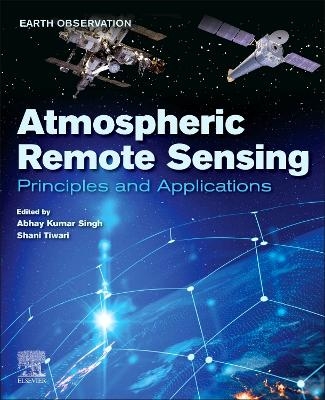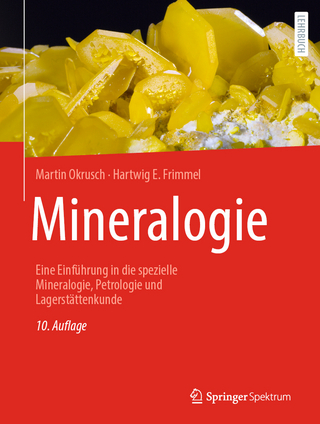
Atmospheric Remote Sensing
Elsevier - Health Sciences Division (Verlag)
978-0-323-99262-6 (ISBN)
This book is a valuable reference for students, researchers and professionals working in atmospheric science, remote sensing, and related disciplines.
Dr. Abhay Kumar Singh is a professor of Physics at Banaras Hindu University, Varanasi, India. He completed his graduation, post-graduation, and a doctoral degree from Banaras Hindu University. He has more than 25 years of teaching and research experience. He has supervised 12 Ph.D. theses and 45 master’s theses. He has published 225 research papers in international/national journals of repute. He has completed 16 research projects funded by DST, UGC, ISRO, SERB, MoES. He was awarded BOYSCAST Fellowship for advance research at Umea University, Sweden. His field of research is aerosols, dust storms, and their climate effects; space weather studies of ionosphere/magnetosphere; GPS based TEC and water vapor measurements; and VLF whistler-mode waves. Dr. Shani Tiwari is a scientist and working at the National Institute of Oceanography, Goa, India. He received his doctorate degree from Banaras Hindu University. He has more than ten year of research experience in the field of aerosol remote sensing. After his doctorate, he served at Graduate School of Environmental Studies, Nagoya University, Japan as a Designated Assistant Professor. He also worked at Physical Research Laboratory Ahmedabad India and Environmental Research Institute, Shandong University, Qingdao, China, as Postdoctoral Fellow. His research focuses on aerosol remote sensing, environmental pollution, radiative transfer, and climate change. He has published 32 peer-reviewed research articles and book chapters in international/national journals with h/i10 – index 14/15 and has delivered several oral, posters presentations along with an invited talk in various national/ international conferences/meetings. He also serves as a reviewer for several peer-reviewed research journals.
Section 1: Principles of atmospheric remote sensing 1. Satellite Remote Sensing Aerosol Optical Depth (AOD) Retrievals: accuracy assessment, limitations, and usage recommendations over Asia 2. Earth Observation Satellites (EOS) for global sustainability: Potentials and boundaries 3. Remote Sensing and its implication to air pollution studies 4. Global Navigation Satellite System and its Application in Remote Sensing of Atmosphere 5. Estimation of Ionospheric Total Electron Content (TEC) from GNSS observations 6. Impact of water vapor on atmospheric correction of satellite images
Section 2: Application of atmospheric remote sensing 7. Identification of fires over the Indian region from space 8. Identification of different aerosol types observed at a semi-arid location in southern peninsular India retrieved from the CALIPSO 9. Remote sensing of clouds: challenges and way forward 10. Study of Aerosol – Cloud Interaction over Indian region using satellite remote sensing 11. Aerosol loading over the Northern Indian ocean using spaceborne measurement 12. Balloon – based remote sensing of Atmosphere 13. Vertical distribution of atmospheric brown clouds using LiDAR remote sensing over Indian region 14. Application of Remote Sensing to study forest fires over the Himalayan region 15. Study of the atmospheric and ionospheric phenomenon using GPS based remote sensing technique 16. Low-latitude lower ionosphere remote sensing using very low frequency (VLF) waves 17. Remote Sensing of Ionosphere, Plasmasphere, and Magnetosphere by VLF Wave 18. Remote Sensing of Ionospheric Irregularities 19. Application of atmospheric remote sensing in disaster management 20. Characteristics of tropical cyclones through remote sensing observations and techniques 21. Significance of Remote sensing in Tropical Cyclone prediction and disaster management: Indian perspective 22. Study of dust storm characteristics over Indo – Gangetic Basin through satellite remote sensing 23. Geomorphological mapping of glacial and periglacial landforms using Remote Sensing: Examples from semi-arid and sub-humid Himalayan valleys 24. Classification of Remotely sensed Formosat-2 Haridwar data using Deep Learning Artificial Neural Network and Convolutional Neural Network 25. Remote sensing-based study of landslide hazard zonation in Namchi and its surrounding area of Sikkim, India
| Erscheinungsdatum | 02.11.2022 |
|---|---|
| Reihe/Serie | Earth Observation |
| Verlagsort | Philadelphia |
| Sprache | englisch |
| Maße | 191 x 235 mm |
| Gewicht | 1000 g |
| Themenwelt | Naturwissenschaften ► Geowissenschaften ► Geografie / Kartografie |
| Naturwissenschaften ► Geowissenschaften ► Meteorologie / Klimatologie | |
| Naturwissenschaften ► Physik / Astronomie ► Angewandte Physik | |
| ISBN-10 | 0-323-99262-5 / 0323992625 |
| ISBN-13 | 978-0-323-99262-6 / 9780323992626 |
| Zustand | Neuware |
| Informationen gemäß Produktsicherheitsverordnung (GPSR) | |
| Haben Sie eine Frage zum Produkt? |
aus dem Bereich


